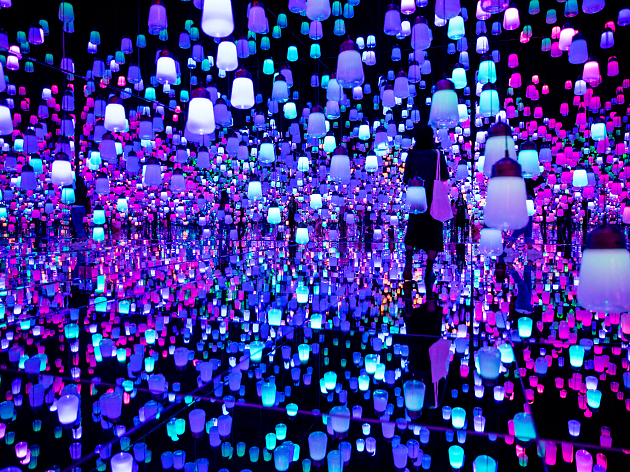TeamLab
teamLab (f. 2001) is an international art collective, an interdisciplinary group of various specialists such as artists, programmers, engineers, CG animators, mathematicians and architects whose collaborative practice seeks to navigate the confluence of art, science, technology, and the natural world.
teamLab aims to explore the relationship between the self and the world and new perceptions through art. In order to understand the world around them, people separate it into independent entities with perceived boundaries between them. teamLab seeks to transcend these boundaries in our perception of the world, of the relationship between the self and the world, and of the continuity of time. Everything exists in a long, fragile yet miraculous, borderless continuity of life.
teamLab’s works are in the permanent collection of the Art Gallery of New South Wales, Sydney; Art Gallery of South Australia, Adelaide; Asian Art Museum, San Francisco; Asia Society Museum, New York; Borusan Contemporary Art Collection, Istanbul; National Gallery of Victoria, Melbourne; and Amos Rex, Helsinki.
Forest of Resonating Lamps

Forest and Spiral of Resonating Lamps in the Forest - One Stroke, Snow and Winter Camellia
TeamLab, 2018, Interactive Installation, Murano Glass, LED, Endless, Sound: Hideaki Takahashi
Before the modern era in Japan, Kasane no Irome (nuances of layered colors) were seasonal colors created in silk. The complicated colors were the result of a combination of front and back colors (silk at the time was so thin that the liner was transparent, creating more nuanced colors), overlapping color gradations, complex weave colors, and combinations of warp and weft.
When the lamps shine brightly and then fade, three winter Kasane no Irome colors are created: Ice, Layered Ice (Kōrigasane), and Camellia (Tsubaki).
When a person stands still close to a lamp, it shines brightly and emits a color that resonates out. The light becomes the starting point, and it spreads to the two nearest lamps. The light from the two nearest lamps transmits the same color to other lamps, spreading out continuously. The light transmitted always resonates out as a bright light once, passing to close lamps, until all lamps have shone brightly once, and then returns to the first lamp. The light of the lamp in response to human interaction, divides in two, becomes one optical line through all lamps respectively, finally, meeting at the first lamp that became the starting point.
All of the lamps, seemingly scattered randomly, have a single connecting line (unicursal) that can be drawn. When drawing a line, the stroke (the same starting and ending points) is drawn from a lamp to a lamp that is closest in distance in three-dimensions. By arranging the lamps in this way, the light of the lamp corresponding to the person is always propagated to the nearest lamp, and must always pass through all the lamps of the stroke without fail, and will finally got back to the first lamp that became the starting point.
The arrangement of the lamps is mathematically determined. A large number of solutions were evaluated that take into account the variation and distribution in the height, direction of the lamp, and the smoothness of the three-dimensional path (light trajectory).
The arrangement of the lamps born from such a process seems to be random at first sight, but the light continues to the lamp physically closest to it, which gives a natural feeling. And since the light trajectory of the lamp is connected by a single line, the light born from any particular lamp and the light born from any other lamp, will always cross each other.
The arrangement of the lamps is not only beautiful in a static way, but also in a dynamic way when activated by people in the space, and in a continuous way. It demonstrates the space of a new era that adapts and changes due to the movement of people in it.
